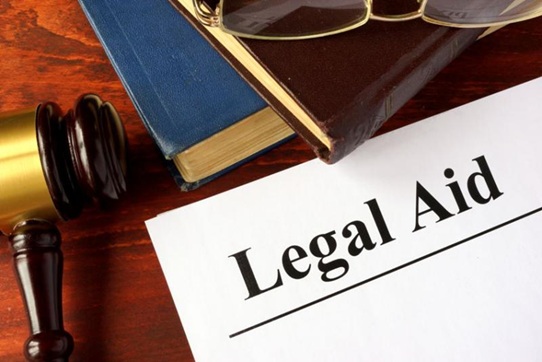| (Mains, General Studies Paper- 2: Welfare schemes for vulnerable sections of the population by the Centre and the States and the performance of these schemes; Mechanisms, laws, institutions and bodies constituted for the protection and betterment of these vulnerable sections) |
Reference
India's Legal Aid System, despite being one of the largest systems in the world, is suffering from inadequate capacity, lack of awareness and access. This emphasises the urgent need to boost institutional and grassroots capacities to ensure justice, especially for the marginalised.

Legal Aid System in India
- Article 39A of the Constitution mandates free legal aid.
- The Legal Services Authorities Act, 1987 established the National Legal Services Authority (NALSA), State Legal Services Authority (SLSA), District Legal Services Authority.
- Through this, Taluk Legal Services Committees were formed at the block level.
Challenges facing India’s legal aid system
- Lack of quality legal aid lawyers with low motivation and remuneration
- Lack of legal awareness in rural and marginalized communities
- Poor coordination between legal aid institutions and judiciary
- Limited use of technology in outreach and service delivery
Efforts by the Government to strengthen the legal aid system
Key Initiatives of National Legal Services Authority
- Lok Adalats: Easy, instant and cost-free dispute resolution
- Legal Aid Clinics: Providing legal consultation at village level
- Para Legal Volunteer Scheme (PLVs): Providing legal information and assistance at local level
- Digital Legal Aid (E-Lok Adalat, Tele/Video Counselling): Reaching remote areas through technology
Reforms through Digital Initiatives
- Tele Law Scheme: Free legal consultation in rural areas through Common Service Centres (CSC)
- Justice at Doorstep Achieving the Goal
- Legal Aid Mobile App: This is NALSA's mobile app to access legal information, free lawyers and assistance.
- E-Court Mission Mode Project: Making courts technologically accessible to common citizens
Legal Literacy Campaign
- Organizing legal literacy camps in schools, colleges, panchayats and prisons
- NALSA’s ‘Connecting to Serve’ theme focused on making citizens aware of their rights
Inclusiveness in the justice system
- Special legal aid cells for vulnerable sections such as women, children, senior citizens, transgenders, mentally ill, orphans etc.
- Jail Legal Aid Centres for poor/undertrial prisoners lodged in jails
Suggestions
- Capacity building: Improve training and salaries of legal aid lawyers to attract skilled professionals
- Grassroots outreach: Strengthening legal aid system at block and panchayat levels
- Use of technology: Expansion of e-legal services, online helplines and AI-based legal advice tools
- Monitoring and accountability: Regular assessment of quality of cases, settlement rates and beneficiary satisfaction
- Role of civil society and law schools: Legal literacy campaigns • Encourage clinical legal education and student participation in legal aid
- Promote collaboration with NGOs and social workers for outreach and follow-up
Conclusion
Legal aid must go beyond symbolic outreach and become a strong instrument of social justice. A well-funded, people-centric and technology-enabled legal aid system is essential to ensure inclusive justice in India.



